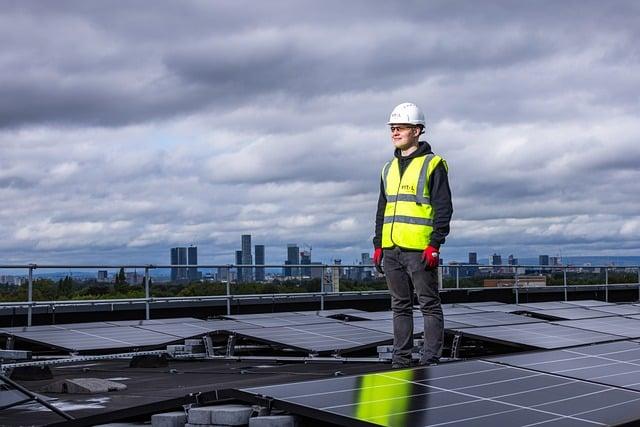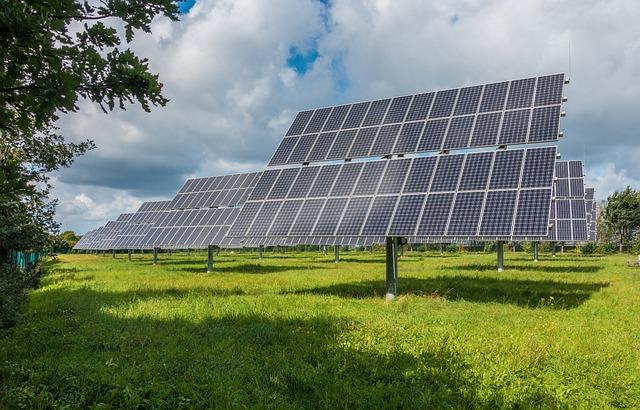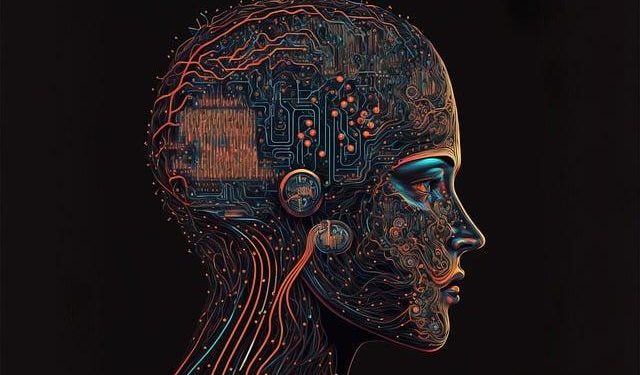In the vast expanse of the sky, where the sun performs its daily ballet of light and shadow, lies an untapped symphony of energy waiting to be harnessed. As we stand on the precipice of a renewable energy revolution, the challenge remains: how do we accurately predict the ebbs and flows of solar power generation? Enter artificial intelligence, the digital maestro orchestrating a new era in energy forecasting. With its unparalleled ability to analyze patterns and anticipate changes, AI is transforming how we understand and utilize the sun’s abundant gifts. In this article, we delve into the innovative intersection of artificial intelligence and solar energy forecasting, exploring how this technological synergy is shaping a sustainable future, one sunbeam at a time.
Harnessing the Sun: How AI Revolutionizes Solar Energy Forecasting
In recent years, the fusion of artificial intelligence and renewable energy has unveiled transformative possibilities, particularly in the realm of solar power. AI is now at the forefront of predicting solar energy trends, utilizing its vast computational capabilities to analyze and interpret complex data sets. This advancement allows for the anticipation of solar energy production, even amidst unpredictable weather conditions. By leveraging machine learning algorithms, AI can assess historical weather data, satellite images, and atmospheric conditions to deliver highly accurate forecasts. This precision not only optimizes energy grid management but also aids in maximizing the efficiency of solar panels.
- Enhanced Accuracy: AI-driven models significantly outperform traditional forecasting methods.
- Real-Time Adjustments: Continuous learning enables AI systems to adapt forecasts based on live data inputs.
- Cost Efficiency: Better predictions lead to reduced energy waste and lower operational costs.
Moreover, AI facilitates the development of smart energy management systems that can dynamically allocate resources, ensuring that energy demands are met with minimal reliance on non-renewable sources. This not only propels the solar industry towards greater sustainability but also accelerates the global transition to a greener future. As AI continues to evolve, its role in solar energy forecasting promises to become even more integral, offering innovative solutions to the challenges of tomorrow.

Decoding Solar Patterns: AIs Role in Predicting Energy Output
In the ever-evolving world of renewable energy, artificial intelligence is emerging as a pivotal player in unlocking the mysteries of solar patterns. By leveraging sophisticated algorithms, AI can analyze vast datasets from satellite imagery, weather forecasts, and historical solar production to make highly accurate predictions. This capability allows energy companies to optimize their grid management, ensuring a steady and reliable flow of solar power.
Key Contributions of AI in Solar Energy Prediction:
- Enhanced Accuracy: AI systems can process data at a scale and speed beyond human capacity, improving forecast precision.
- Dynamic Adaptation: Machine learning models continuously evolve, adapting to new data inputs for improved future predictions.
- Cost Efficiency: By anticipating fluctuations in solar output, companies can better manage resources, reducing operational costs.
- Environmental Impact: Optimized energy distribution minimizes wastage, supporting a more sustainable energy landscape.

From Data to Decisions: Leveraging AI for Accurate Solar Predictions
In the ever-evolving landscape of renewable energy, harnessing the power of artificial intelligence (AI) has become pivotal in transforming vast datasets into actionable insights. AI-driven models are revolutionizing the way we predict solar energy trends, enabling more precise and reliable forecasts. By analyzing historical weather patterns, solar radiation data, and even satellite imagery, AI algorithms can anticipate fluctuations in solar power generation with remarkable accuracy.
- Enhanced Efficiency: AI models process and analyze complex datasets far more quickly than traditional methods, leading to faster decision-making.
- Scalability: As the volume of data grows, AI systems scale effortlessly, accommodating larger datasets without compromising on performance.
- Real-time Adjustments: Continuous learning capabilities of AI allow for real-time adjustments, ensuring optimal energy management and grid stability.
These advancements not only aid in maximizing the efficiency of solar power systems but also play a crucial role in strategic planning and policy-making, guiding investments towards a sustainable future. With AI at the helm, the solar energy sector is poised for a future where decisions are driven by data, fostering a greener planet.

Strategic Insights: Implementing AI-Driven Forecasting in Solar Energy Systems
Incorporating artificial intelligence into solar energy systems offers a transformative approach to predicting energy trends. By analyzing vast datasets that include weather patterns, historical energy production, and real-time environmental conditions, AI algorithms can provide accurate and actionable forecasts. This precision enables energy providers to optimize resource allocation, reduce operational costs, and enhance grid stability. Key benefits of AI-driven forecasting in solar energy include:
- Increased Efficiency: AI systems can predict energy output with remarkable accuracy, allowing for more efficient energy storage and distribution.
- Cost Reduction: By anticipating fluctuations in solar energy production, operators can minimize reliance on backup power sources, leading to significant cost savings.
- Improved Grid Management: AI enhances the ability to integrate solar energy into the existing grid infrastructure, ensuring a balanced supply and demand.
AI not only enhances the predictability of solar energy but also facilitates strategic decision-making. By leveraging machine learning models, solar energy companies can explore potential future scenarios, identify emerging trends, and adjust their strategies accordingly. This proactive approach ensures that solar energy systems remain robust and adaptable in an ever-changing environment, paving the way for a more sustainable future.
In Conclusion
As the sun sets on our exploration of , we find ourselves standing at the dawn of a new era in renewable energy. The fusion of AI and solar technology is not merely a beacon of innovation but a testament to human ingenuity and our quest for a sustainable future. By harnessing the power of AI, we are unlocking the potential to predict and optimize solar energy production with unprecedented precision, illuminating pathways to more efficient energy use and smarter resource management.
In this evolving landscape, where data meets daylight, the possibilities are as boundless as the horizon. As researchers and industry leaders continue to push the boundaries of what’s possible, one thing remains certain: the synergy between artificial intelligence and solar energy holds the promise of a brighter, cleaner tomorrow. Let us continue to watch the skies, not just for sunlight, but for the endless opportunities that innovation brings.

































